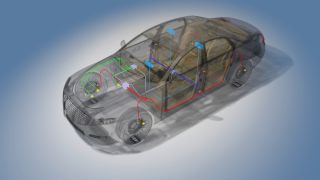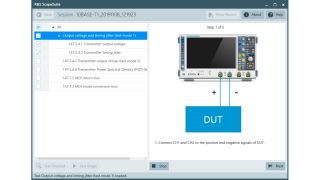Your task
10BASE-T1S Ethernet enables the integration of diverse sensors into an automotive-Ethernet vehicle supply system, for example short-range radar sensors for detecting blind spots or ultrasonic sensors for the parking assistant. For reliable operation of the functions, data transmission over 10BASE‑T1S Ethernet must be assured at all times and in every climatic environment. Functionality must be tested during development and in production. Only 10BASE-T1S Ethernet interfaces that have passed compliance testing in line with IEEE 802.3cg can be deployed in vehicles. Consequently, vehicle manufacturers and their suppliers need measuring equipment that allows them to perform these tests quickly and reliably.
Background
Automotive Ethernet with single twisted-pair network technology enables fast and cost-effective data communications in vehicles. It allows the integration of electronic control units (ECU), a wide variety of sensors, rear-view cameras and other devices into vehicle supply systems. The new IEEE 10BASE‑T1S standard makes it especially easy to integrate devices into automotive Ethernet using the multi-drop configuration. Unlike the star topology of 100BASE-T1, no additional switches are needed, and the cabling is simpler. Vehicle bus systems such as CAN or LIN can easily be replaced by 10BASE‑T1S. There is no need for gateways to connect different bus systems. 10BASE-T1S communicates in half-duplex mode over a twisted pair and enables data transmission at 10 Mbit/s. Data collisions due to simultaneous transmission by multiple devices are prevented by physical layer collision avoidance (PLCA). For interface verification, the IEEE 802.3cg standard specifies compliance testing with six test cases.

















